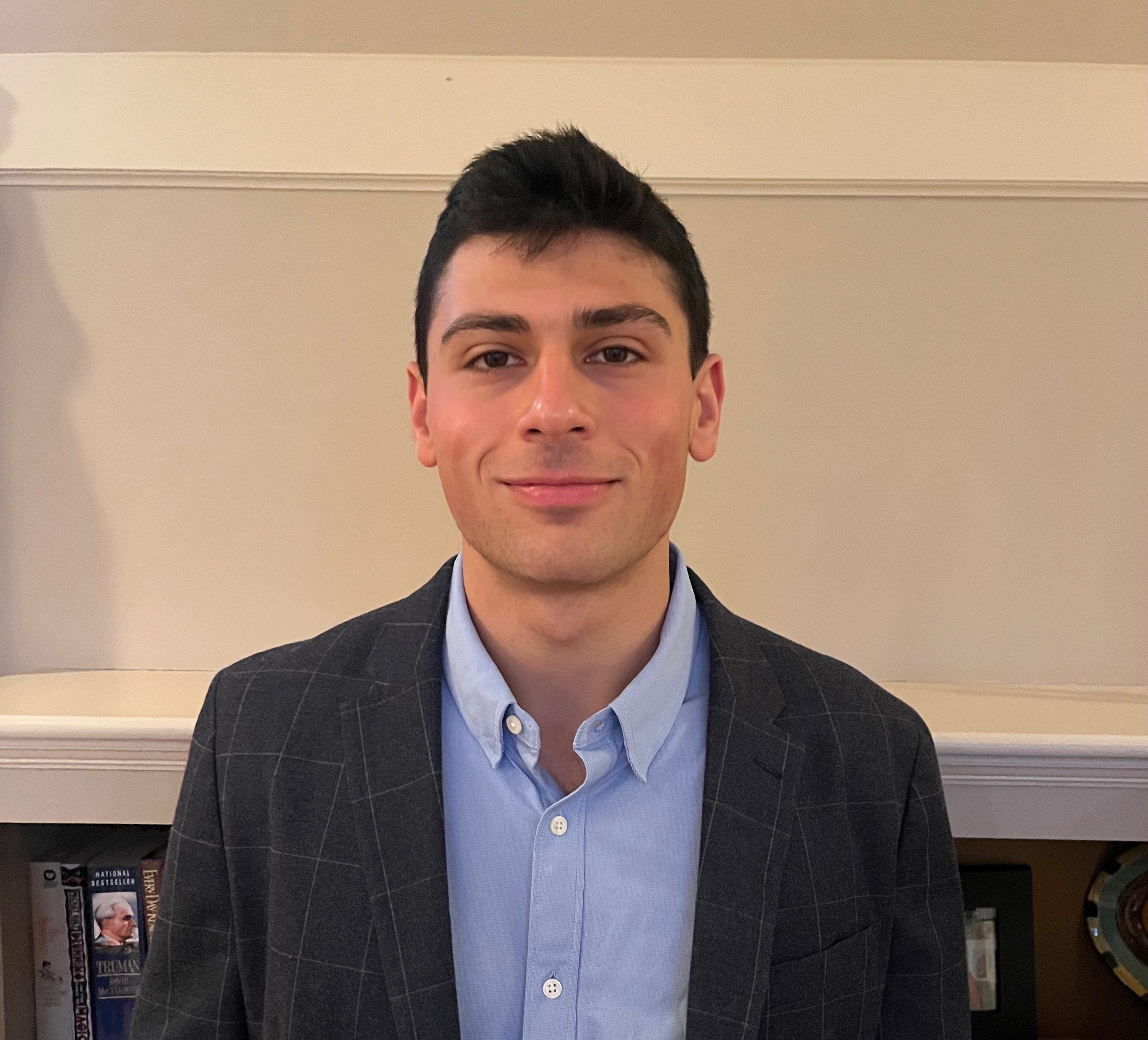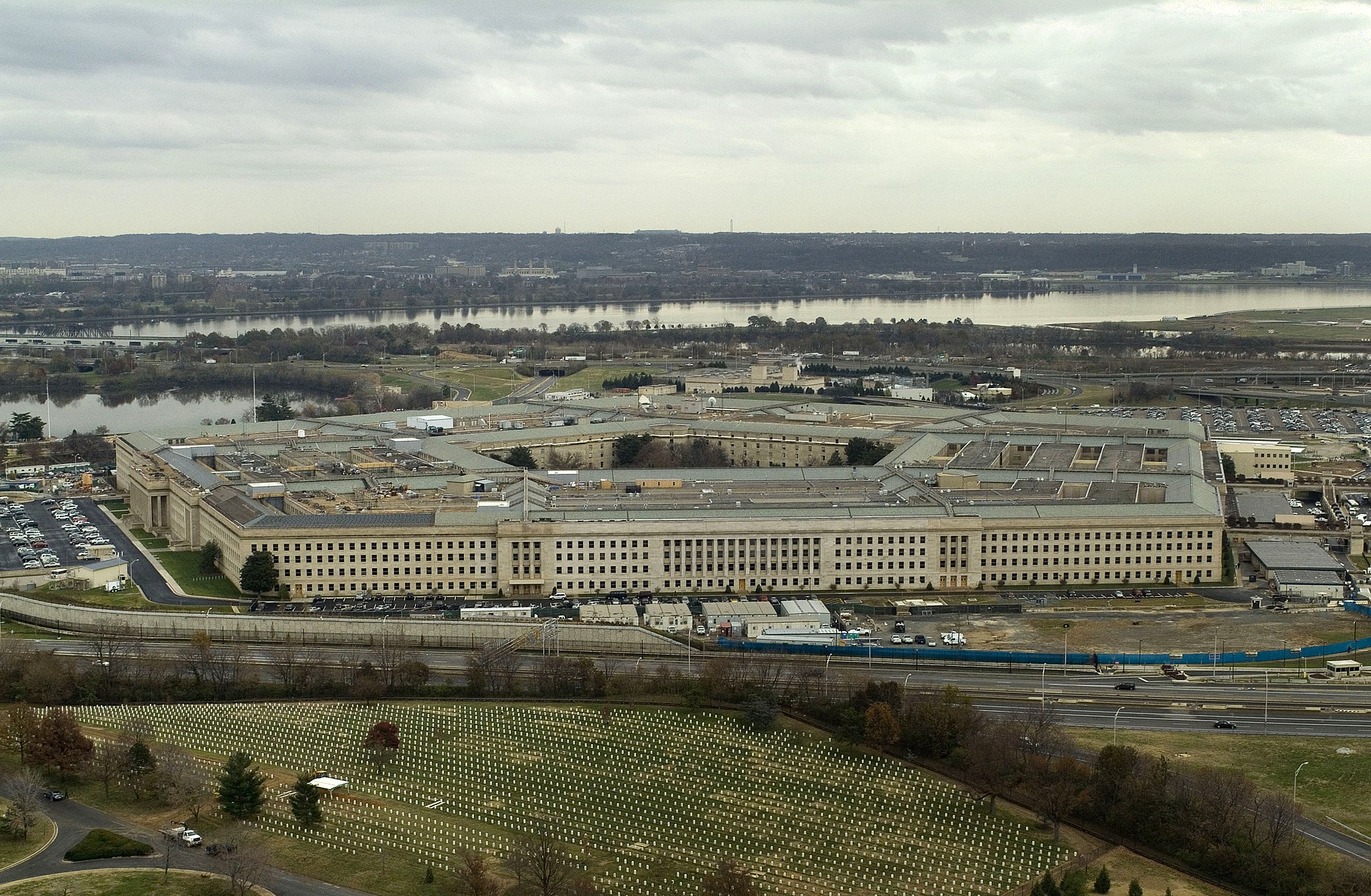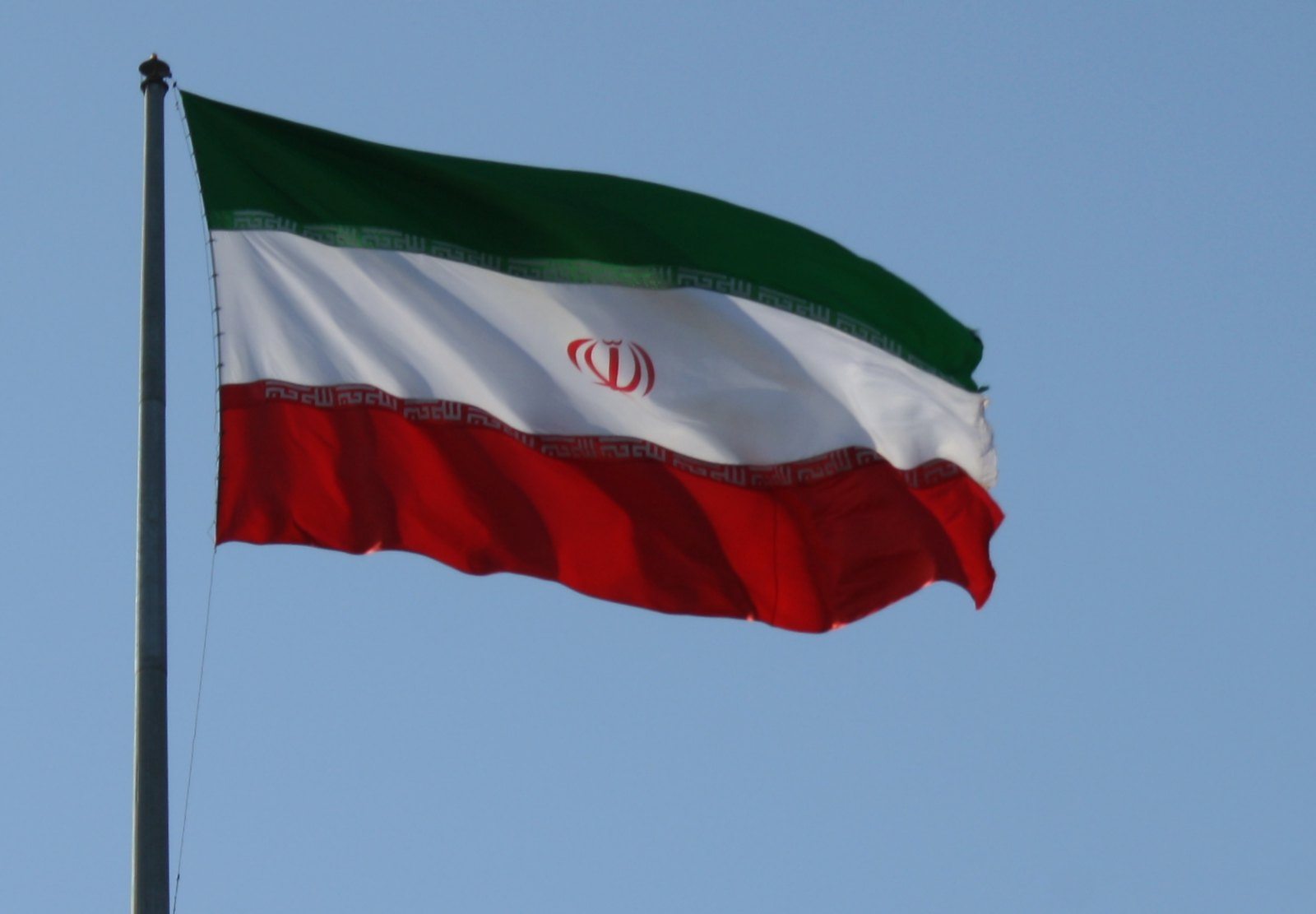Point #3: Evidence That Trump Pressured Pence to Refuse to Count Electoral Votes
A summary and evaluation of the committee’s evidence.

Published by The Lawfare Institute
in Cooperation With

♦ Return to Evidence Navigation Page |
Take Me to Point #4 → |
The Jan. 6 select committee’s presentation on the pressure President Trump put on Vice President Pence is one of its strongest and most dramatic presentations.
Members cited statements from Trump’s legal advisers and his chief of staff indicating that they recognized the baselessness of the president’s claims that Pence could unilaterally overturn the results of the election. Members also showed that Pence and his team repeatedly expressed the view to Trump that the vice president had no authority to refuse to count electoral votes. The committee laid out further evidence suggesting that even those advancing the legal claims didn’t believe them.
Despite all of this, the committee showed that Trump persistently pressured Pence in private and in public to refuse to count electoral votes during the joint session. The committee set forth the evidence relevant to this point in its June 9, June 13, June 16, and July 12 hearings.
As with Point #2, a considerable amount of evidence on this point had already emerged before the committee addressed it in its third hearing—in this instance from the committee’s litigation with Trump lawyer John Eastman. In this case, Judge David O. Carter laid out the facts in some detail in his opinion on March 28.
Committee Vice Chair Liz Cheney said that as Pence’s staff began to “get a sense” of Trump’s plan for Jan. 6, staffers asked for a comprehensive briefing on the election from the campaign team, and “on Jan. 2, the general counsel of the Trump campaign, Matthew Morgan—the campaign’s chief lawyer—summarized what the campaign had concluded weeks earlier, that none of the arguments about fraud, or anything else, could actually change the outcome of the election.”
The committee presented video evidence of a rioter reading aloud a tweet from Trump during the insurrection itself. The tweet says: “Mike Pence didn’t have the courage to do what should have been done to protect our Country and our Constitution, giving States a chance to certify a corrected set of facts, not the fraudulent or inaccurate ones which they were asked to previously certify. USA demands the truth!”
The select committee provided considerable evidence supporting the notion that the legal theory espoused by Trump and Eastman in the days leading up to Jan. 6 was not a good-faith legal argument. Rather, it was the product of an extended search for a legal means to justify overturning the election results.
On Dec. 13, 2020, the day before the Electoral College met to cast its votes, a lawyer named Kenneth Chesebro sent a memorandum to Trump lawyer Rudy Giuliani. In it, Chesebro argued that during the joint session of Congress, the vice president has the authority to “mak[e] judgments about what to do if there are conflicting votes.” Chesebro contended that Pence should not count Arizona’s electoral votes because there were two conflicting slates of electors—citing a group of Trump voters who claimed to be the legitimate electors for the state. (These groups also emerged in other states whose electoral votes were disputed by the Trump campaign.)
Cheney highlighted Judge Carter’s assertion that Chesebro’s memo “pushed a strategy that knowingly violated the Electoral Count Act,” and stated that it was “both intimately related to and clearly advanced the plan to obstruct the Joint Session of Congress on January 6, 2021.”
Soon after Chesebro sent this memo to Giuliani, Eastman began making similar claims. On Dec. 23, Eastman composed a memo in which he argued that the vice president had the power to determine the outcome of the presidential election as the presiding officer of the joint session of Congress. He wrote, “Seven states have transmitted dual slates of electors to the President of the Senate.” These dual slates, Eastman said, gave Pence the authority to declare that Trump had won the election.
Eastman followed this up with another memo. In it, he alleged that Pence could simply reject electoral votes from “disputed” states and deem Trump the winner of the election without considering the vote totals from the certified electoral slates. Testifying before the committee, Pence lawyer Greg Jacob stated that there were, in fact, no dual slates from these seven states. Judge J. Michael Luttig explained that Eastman’s claims set forth in these memorandums lacked any legitimate historical or legal justification.
Evidence presented by the committee demonstrated that those closest to Trump believed these legal claims were bogus.
Pat Cipollone, the former White House counsel, testified during a committee deposition that he believed Pence had no authority to refuse to count the electoral votes during the Jan. 6 joint session of Congress and that his view on this issue would have been informed by the views of Deputy White House Counsel Patrick Philbin and Pence’s chief lawyer, Jacob. Cipollone testified that he said to someone in Pence’s office that the vice president could blame him for Pence’s view about his lack of authority to overturn the results of the election. Cipollone also said that he thought the vice president “did the right thing … [and] did the courageous thing.”
Rep. Stephanie Murphy said that Cipollone “expressed his view repeatedly that the vice president was right” that he did not have the authority to refuse to count the electoral votes. Cipollone also did not refute prior testimony from others who said Cipollone believed Eastman’s theory was “nutty,” and that Cipollone conveyed this view to Eastman. When asked why he did not attend a Jan. 4 meeting between Eastman, Trump, and Pence, Cipollone said he had gone to the Oval Office with the intention of attending the meeting, but he did not end up going to the meeting for “reasons … that are privileged.”
Trump lawyer Eric Herschmann agreed that Eastman was dead wrong. According to Herschmann, it was not conceivable that the vice president would have the authority to choose the president. After hearing Eastman explain his legal theory, Herschmann responded, “Are you out of your effing mind … you’re going to turn around and tell 78-plus million people in this country … this is how you’re going to invalidate their votes, because you think the election was stolen? And I said they’re not going to tolerate that. I said you’re going to cause riots in the streets.” Herschmann paraphrased Eastman’s reply: “There’s been violence in the history of our country … to protect the democracy or protect the republic.”
Trump campaign adviser Jason Miller testified that Trump lawyers Justin Clark and Matt Morgan also believed Eastman was “crazy.” Before Jan. 6, they both expressed their belief that Eastman’s theories were completely meritless. Pence’s former Chief of Staff Marc Short testified that he believed Trump Chief of Staff Mark Meadows also agreed with the view that Pence did not have the authority to refuse to count electoral votes.
Even Giuliani and Eastman himself acknowledged the baselessness of Eastman’s theory. Herschmann described a call he had with Giuliani on the morning of Jan. 6, in which Giuliani admitted that Herschmann and those who maintained that Pence could not refuse the electoral votes were “probably right.” The committee also presented a draft letter to the president—the author of which is not specified—which proposed that the vice president could choose which electors to count during the joint session of Congress. Rep. Pete Aguilar then stated that Eastman himself had “eviscerated” that idea on Oct. 11, 2020, in a comment shown on the document, writing: “The 12th Amendment only says that the President of the Senate opens the ballots in the joint session and then, in the passive voice, that the votes shall then be counted. … Nowhere does it suggest that the President of the Senate gets to make the determination on his own.” Further, on Dec. 19, Eastman stated in an email that the fake electors were wholly illegitimate under the law and that these electors would be “dead on arrival in Congress.”
Jacob testified that when he questioned Eastman about Democratic vice presidents refusing to count electoral votes, Eastman said, “Al Gore did not have a basis to do it in 2000, Kamala Harris shouldn’t be able to do it in 2024, but I think you should do it today.”
Despite these acknowledgments, Eastman successfully urged this theory on Trump, who invited him and Giuliani to ardently defend it at the Ellipse on Jan. 6. Giuliani said, “Every single thing that has been outlined as the plan for today is perfectly legal.” Eastman followed: “All we are demanding of Vice President Pence is this afternoon at 1:00, let the legislatures of the state look into this so we get to the bottom of it and the American people know whether we have control of the direction of our government or not.”
Herschmann told the committee that the day after the Capitol breach, Eastman called him to speak about “something dealing with Georgia,” at which point Herschmann reported that he asked Eastman if he was “out of [his] effing mind” and advised him to “get a great effing criminal defense lawyer.”
A few days later, according to records released by the committee, Eastman emailed Giuliani to request inclusion on a list of potential presidential pardon recipients: “I’ve decided that I should be on the pardon list if that is still in the works.” He did not receive a pardon, Aguilar stated, and when deposed by the select committee, Eastman asserted his Fifth Amendment right against self-incrimination more than 100 times.
Jacob, Pence’s chief legal counsel, testified at the June 16 hearing that the vice president “never budged” from his commitment to properly execute the counting of the electoral votes—which Pence’s legal team determined was the only lawful course of action for the vice president. In a video interview, Short affirmed Jacobs’s description. When Short was asked whether Pence had informed the president of his view that he had no right to overturn the election, Short said the vice president had done so “many times” and in a “very consistent” manner. Short also added that he had clearly conveyed the vice president’s position on the issue to Meadows.
Despite Pence presenting his views clearly to the president, the committee’s evidence illustrates Trump’s persistent campaign beginning in December 2020 to convince Pence to unilaterally seek to overturn the election. On Dec. 23, the president retweeted a memorandum that sought to convince Pence to reject the electoral votes. On Jan. 4, Trump’s efforts to pressure Pence became more direct. At a rally in Georgia on that day, Trump said, “I hope Mike Pence comes through for us. … I hope that our great vice president … comes through for us. He’s a great guy. Of course, if he doesn’t come through, I won’t like him quite as much.” Meanwhile, a conflict between the president and his vice president was beginning to escalate internally. After the Georgia rally on Jan. 4, Trump arranged a meeting with Pence to discuss the Jan. 6 joint session of Congress.
According to Jacob, Eastman described the two legal theories underlying Trump’s pressure campaign during that Jan. 4 meeting. Eastman said Pence could either “reject electoral votes outright” or “declare … a 10-day recess during which … the vice president could sort of issue a demand to the state legislatures in those states to reexamine the election and declare who had won each of those states.” Eastman said both paths were viable, but he did not recommend the outright rejection option because he believed it would not deliver the necessary public acceptance of a Trump victory, according to Jacob.
In that same meeting, Jacob challenged the legality of Eastman’s proposals—arguing that both violated the Electoral Count Act of 1887. Eastman acknowledged this was true but argued that the Electoral Count Act was unconstitutional insofar as it interfered with the vice president’s supposedly plenary power to reject electoral vote slates and that his argument was thus still viable. When Jacob then said this constitutional argument would fail in court, Eastman said courts would not get involved in the dispute because of the political question doctrine.
Jacob told the committee that after the Jan. 4 meeting, Trump had requested that Pence’s staff meet with Eastman again the following day to learn more about his position. On Jan. 5 at 11:06 a.m., around the time the next meeting was scheduled to begin, Trump tweeted, “The Vice President has the power to reject fraudulently chosen electors.”
Jacob testified that what had “most surprised” him about the meeting was that, upon arrival, Eastman said, “I’m here to request that you reject the electors”—a request Jacob recorded on a notepad: “requesting VP reject.” Eastman had only the previous day “recommended against” that exact approach in the Oval Office meeting with the president, Jacob said, a move that Pence’s team had seen “as one of the key concessions that we had secured the night before.”
Jacob stated that because Eastman was “pushing the robust unilateral power theory” in this meeting on the morning of Jan. 5—which he noted was simpler to dispute than the proposal to return the slates of electors to the states—they discussed the textual and historical foundations of Eastman’s argument at length. According to Jacob, Eastman in fact “conceded in that meeting that [founding era practice] did not at all support his position” and further “acknowledged, by the end, that there was no historical practice whatsoever that supported his position.” Notwithstanding these concessions, the committee showed footage of Eastman standing on stage on Jan. 6, claiming that Thomas Jefferson would have supported his position.
Jacob also described Eastman’s acknowledgment during the same Jan. 5 meeting that both of Eastman’s proposals for Pence to refuse to count the electoral votes would lose nine-to-zero in the Supreme Court. (Eastman initially contended he might get two justices to support his theory.) Jacob then testified that Eastman, during this meeting, “again tried to say, but ‘I don’t think the courts will get involved in this, they’ll invoke the political question doctrine, and so, if the courts stay out of it … the [states] will send back the Trump slates of electors and the people will be able to accept that.’”
Jacob testified that he protested against this idea, stating that without resolution from the courts, there would be an unprecedented political standoff—and ultimately, he told Eastman, such a standoff “might well then have to be decided in the streets.”
According to Jacob, he and Eastman had another conversation on Jan. 5, during which Eastman doubled back to the “more prudent course” of sending the electoral slates back to the states, rather than rejecting them altogether. It was at this point that Eastman brought up their shared alma mater—the University of Chicago Law School—to concede that “just between us Chicago chickens, we will understand, as lawyers who have studied the Constitution, that the underlying basis [of the two approaches] really is the same.”
Jacob testified that shortly thereafter, while Pence’s staff felt like they had “sort of defeated” Eastman, the vice president was called into the Oval Office alone. Here, Rep. Aguilar cited “Peril” by journalists Bob Woodward and Robert Costa, who describe this meeting—which included Trump saying to Pence, among other things, “I don’t want to be your friend anymore if you don’t do this”—meaning refuse to count electoral votes during the joint session. When asked about this interaction during deposition, Short confirmed that the vice president did not want absolute authority over the vote-counting bestowed on any individual.
Jacob told the committee that around 5 p.m. on Jan. 5, he took part in another phone call with Short, Pence, Trump, and Eastman, during which Eastman affirmed his understanding that Pence would not reject electors but nonetheless asked if he would be open to suspending the vote count. That same day, Aguilar stated, the New York Times ran an article describing disagreement within the Trump White House over the vice president’s authority to determine the outcome of the election. Trump denied this story, publishing his own statement in response, which declared that “the Vice President and I are in total agreement that the Vice President has the power to act.” Jacob said Pence’s team was “shocked and disappointed” to see Trump’s statement, “because it was categorically untrue.”
The committee proceeded to play clips from depositions with Short and Miller regarding a heated phone call they had concerning the statement. In his deposition, Miller confirmed that the president dictated “most of” the released statement. At this point, Short told the committee that he was so concerned about the situation that he spoke with the head of Pence’s Secret Service detail to convey his belief that it was “likely, as these disagreements became more public, that the president would lash out in some way” at his vice president.
Miller explained that on Jan. 5 and 6, all of the president’s focus was on “what Mike would do or what Mike wouldn’t do.” Jacob testified that on the morning of Jan. 6, while Pence’s staff was finalizing his “Dear Colleague” statement in which he declared that he did not have the power to reject duly submitted electoral votes, the vice president stepped out to take a call from Trump, which White House records reflect happened around 11:20 a.m. Here, the committee presented photos of Trump in the Oval Office during that conversation, along with interview footage of Ivanka Trump and Eric Herschmann both stating that the conversation was “heated.”
Nicholas Luna, former assistant to the president, said he remembered hearing Trump call Pence a “wimp” in some fashion. “It was a different tone than I’d heard him take with the vice president before,” Ivanka Trump stated—and her chief of staff, Julie Radford, told the committee that she believed Trump had called Pence “the ‘P’ word.”
Rep. Aguilar stated that once the vice president released his public letter of protest, rioters became enraged and began to chant, “Hang Mike Pence.”
Finally, the committee set out to demonstrate that Trump on Jan. 6 itself was fully aware of the escalating danger to Pence yet continued to hurl inflammatory criticisms at him by way of pushing his supporters to storm the Capitol and pressure the vice president to suspend the vote count.
Aguilar stated that the committee “received testimony that the president’s chief of staff, Mark Meadows, was notified of the violence at the Capitol by 2 p.m., and likely earlier.”
“The testimony further establishes that Mr. Meadows quickly informed the president, and that he did so before the president then issued his 2:24 p.m. tweet criticizing Vice President Pence for not having ‘the courage’ to do what needed to be done,” Aguilar said. He then played a video of rioters stating that Pence betrayed the president and the country, with one rioter saying that Pence is “nothing but a traitor, and he deserves to burn with the rest of them” because “Pence voted against Trump.”
Sarah Matthews, former White House deputy press secretary, stated that she and another staff member were conferring and “thought that the president needed to tweet something, and tweet something immediately” to deescalate the situation, as by around 2 p.m., it was clear that things were “bad” and “getting out of hand.” They reported this to their superiors, Kayleigh McEnany and Mark Meadows. Shortly thereafter, Matthews described seeing a tweet pop up from the president, criticizing Mike Pence—a move akin to “pouring gasoline on the fire” in Matthews’s account. Aguilar stated that the committee’s investigation showed that “immediately after” Trump’s 2:24 p.m. tweet, crowds inside and outside the Capitol surged. He played a simulation of the invasion, indicating that rioters opened the East Rotunda door and breached the crypt within one minute of the president’s tweet.
The committee also detailed Pence and his staff’s move to a secure location in the Capitol, showing that at one point, the vice president was only 40 feet away from a violent mob. Aguilar asked Jacob whether, at any point during that time, the president called Pence to check on his safety—to which Jacob responded, “He did not.” Citing a recent Justice Department court filing, Aguilar stated that a confidential witness from the Proud Boys told the FBI that members of the group “said that they would have killed [Vice President] Mike Pence if given the chance.”
The committee also released an email exchange between Jacob and Eastman during Pence’s evacuation on Jan. 6, during which Jacob said: “[T]hanks to your bullshit, we are now under siege.” Eastman replied that the siege was Pence’s own fault for not complying with what the president had said was necessary. Later that day, Jacob explicitly asked Eastman whether he had advised Trump that the vice president cannot unilaterally decide an election, to which Eastman responded that he had advised Trump of this, “but you know him. Once he gets something in his head, it’s hard to get him to change course.”
Even after the insurrection had been quelled, Eastman did not back down: Jacob testified that later that evening, at 11:44 p.m., Eastman “implored me, now that we have established that the Electoral Count Act isn’t so sacrosanct as you have made it out to be, I implore you one last time, can the vice president please do what we have been asking him to do these last two days?”
The bottom line here is that the committee’s evidence that Trump pressured Pence to violate his oath and reject the electors is overpowering. He did this advised by lawyers who appear to have been aware that their legal theory was garbage. Trump actively lied in public about what Pence believed about his own authority. And he pushed Pence on Jan. 6 itself, knowing he was potentially putting the vice president in danger.
♦ Return to Evidence Navigation Page |
Take Me to Point #4 → |







